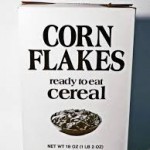Answer: When it tastes as good as the real thing!
Generic food brands, introduced in 1977, have changed dramatically over the last 37 years. Initially sold in plain white packaging with black lettering, they were considered inferior to name brand products. The “generics” were even ostracized to their own aisle; a grocery store version of food segregation, if you will. But much like the ad campaign slogan that touted “you’ve come a long way, baby,” generic food has made leaps and bounds in quality, price, and reputation.
aisle; a grocery store version of food segregation, if you will. But much like the ad campaign slogan that touted “you’ve come a long way, baby,” generic food has made leaps and bounds in quality, price, and reputation.
Generic food is produced and manufactured primarily through two venues; at name brand factories on the same production line as their more expensive counterparts, or by less well-known companies. Instead of the plain package designation of the past, most generics are now sold by supermarkets as their “store” brand. What’s even more amazing is that some of the national chains such as Kroger and Walmart actually sell high and low version of their own generics. For example, Kroger has a top quality line (Private Selection) and a budget line (Kroger Value).
Because of their inauspicious start, some people still perceive generic food products as lacking in taste and/or quality. But a trading standards investigation found little nutritional or taste difference between generic and name brand products. And in an October 2010 Consumer Reports food comparison, researchers recommended consumers at least try store brand products. Their rationale? There is little risk because most grocery stores offer a money-back guarantee if you are not satisfied with the generic product. The 2010 Consumer Reports challenge compared 21 name brand vs. store brand products, and results may surprise you. Name brands won seven taste tests, store brands won three, and the other 11 products tied!
Name brand companies spend billions of dollars in advertising to entice you to purchase their products. That cost is ultimately passed on to you, the consumer. Generics don’t have the same mandate to market their products; they can essentially “piggy-back” off the marketing of the name brands. That is why the store brand or generic brand will usually cost less (an exception sometimes exists when the name brand product is on sale).
Generic food products offered to consumers have certain characteristics in common. The price differential runs 10%-35% below national brands, and 10%-20% below private brand. Most retailers have introduced generics in order to attract price conscious shoppers. However, other food retailers have added them to their stock as a defense mechanism to keep from losing patrons to low overhead “box stores” (e.g. Sam’s Club) or to merchants who specialize in generic products (e.g. Aldi’s).
The Bottom Line??
Food is traditionally considered the third largest line item in the family budget, after housing and transportation. However, I have found for many families it is their #1 expense, even more than their house or car payment. We tend not to be aware of how much we spend on food, because it is not a once-a-month bill. If you would like to free up more dollars in your family budget, consider choosing generic food products. You may find that you like them as well, if not more so, than name brand products.

